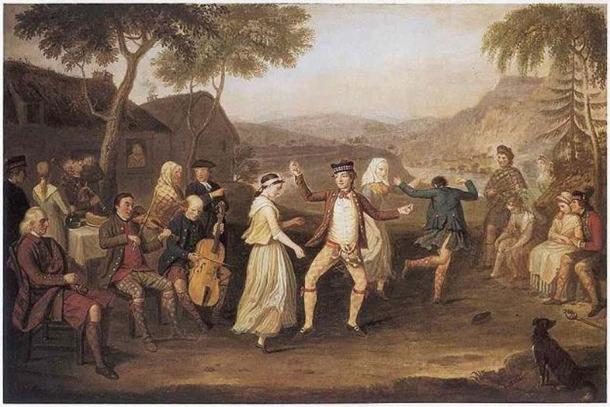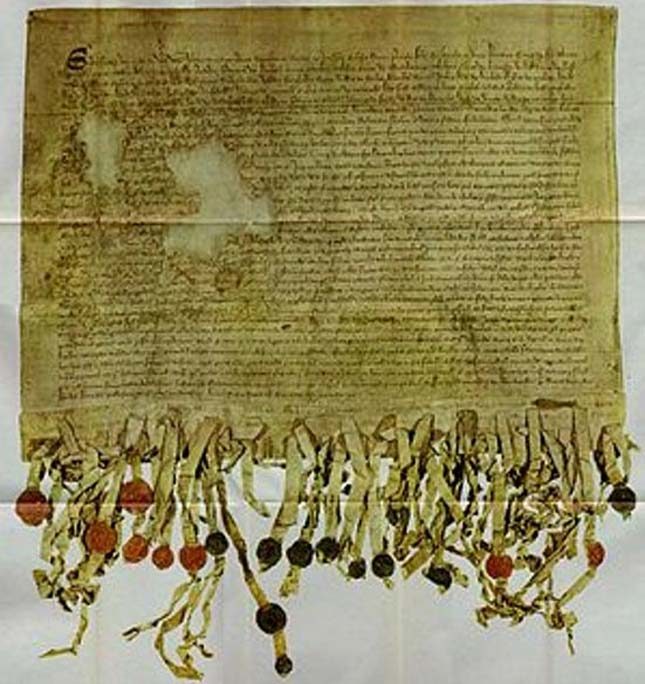Thinking of Scotland, as I do from the somewhat similar mountains of northern India, which has been my home for nigh on twenty years, I do so from a rather Indian perspective; I think of families, clans, and tribes living on land that they consider to be their ancestral land. However, they have an understanding, kept alive in stories from both manuscript and memory, that those same ancestors had themselves migrated from their ancestral lands in a far off past.
What began as a fascination with the origins of the peoples of the Himalayan ranges led quite naturally to an interest in where we all come from, our origins. The Indians of course, as the most ancient of civilizations, had an understanding of the world, when and how it was made, and, more importantly for this piece, who populated it and where they settled.

© Public DomainDavid Allan (Scottish painter 1744-1796), The Highland Wedding, 1780.
One of the more ancient of the Vedic texts that form part of the 'liturgy' of the Hindus (which we were all, at one time, in our human history) is
the code of Manu, the lawgiver; not coincidentally similar to Maru, the lawgiver of Japanese culture, or Minos of Crete, or Moses (who we are perhaps more familiar with). The laws of Manu tell that from the caste of the
kshatriyas sprung the peoples they knew as
Yavanas and we know as Greeks; the
Pahlavas or Persians, and others who would eventually form the cultures of Siam, China, Burma, and Tibet, and the people known to us as Scythian but called
Saka to the Sanskrit writers
.The Scythians are mentioned in the Old Testament too, as are many of the same names of the nations of people described and located in other contemporary texts and tablets. The Egyptians and the Hittites of Anatolia being the two others who were to play leading roles in helping us to make significant strides in understanding the ancient and transcendental culture that was to become Scotland.
Accounts of Ancient InhabitantsIn the Scottish people's Declaration of Arbroath , which our readers will no doubt be familiar with, the authors gave a brief history of their forefathers and their journeys and the Europe of that time. Although it was written in the 14th century, the document is remarkably similar to the stories written centuries before by Greeks, Romans, and the English writer, Bede, to name but a few.
The seventh century Saint Isidore, writing in his
Encyclopaedia of Knowledge , drew from ancient Latin and Greek sources and recorded that the ancient inhabitants of what is now Spain and Portugal and was then known as Iberia, were
the war-like Haspernians, a name not too dissimilar to the Hibernians of Hibernia or Ireland.
© Public DomainThe Tyninghame Copy of the Declaration of Arbroath (1320).
... Hindus (which we were all, at one time, in our human history). Hindus were Kush. Kush is Ethiopia, Afruikans. "We were all, at one time", are you out of your mind? Read Gerald Massey, Breasted, Jackson, Houston, Donnelly, McCabe, Muller, Darkawah, Volney, etc, before making the statements you make.
Shalom